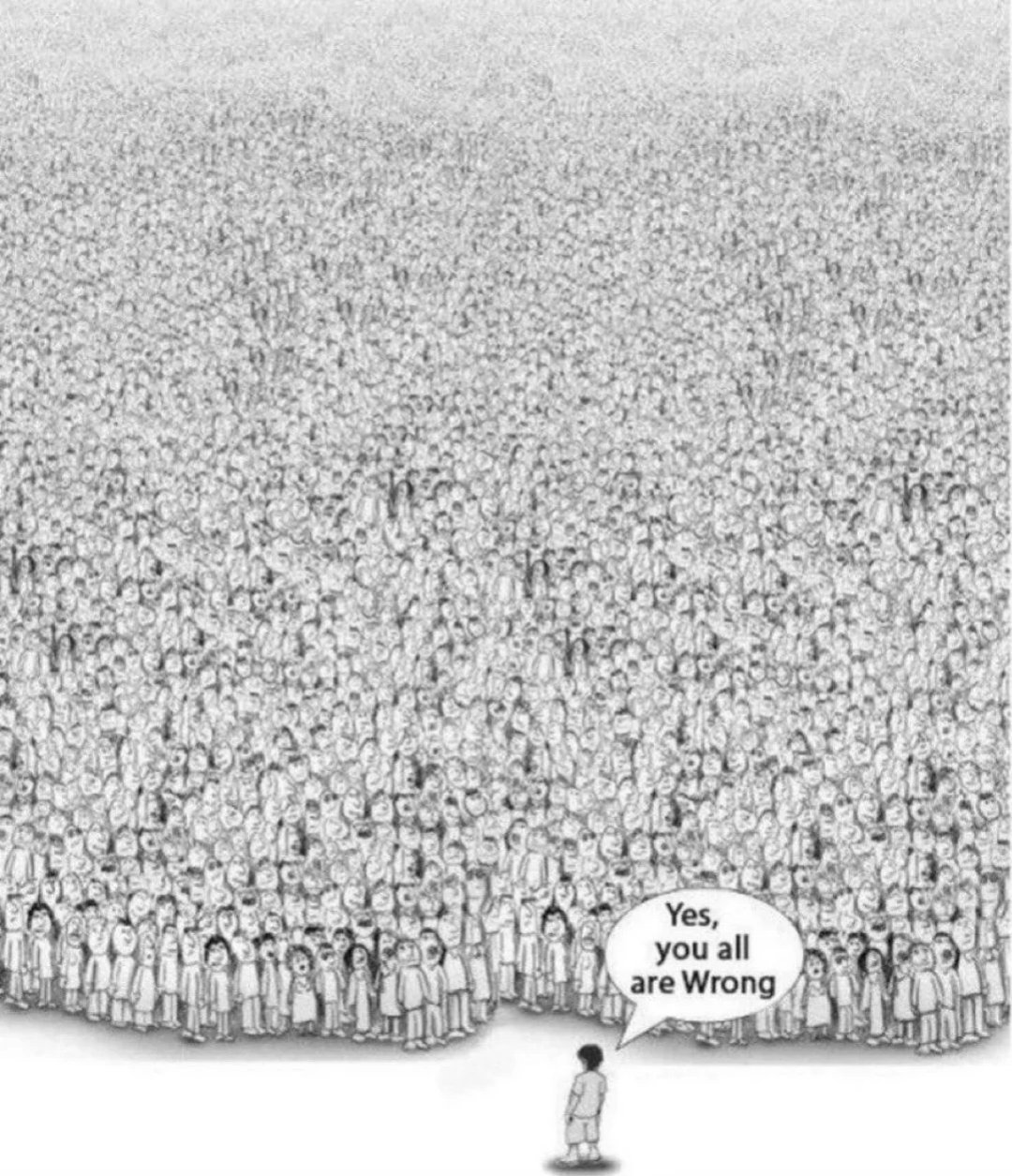this post was submitted on 07 Dec 2023
537 points (87.7% liked)
Asklemmy
43863 readers
1606 users here now
A loosely moderated place to ask open-ended questions
If your post meets the following criteria, it's welcome here!
- Open-ended question
- Not offensive: at this point, we do not have the bandwidth to moderate overtly political discussions. Assume best intent and be excellent to each other.
- Not regarding using or support for Lemmy: context, see the list of support communities and tools for finding communities below
- Not ad nauseam inducing: please make sure it is a question that would be new to most members
- An actual topic of discussion
Looking for support?
Looking for a community?
- Lemmyverse: community search
- sub.rehab: maps old subreddits to fediverse options, marks official as such
- [email protected]: a community for finding communities
~Icon~ ~by~ ~@Double_[email protected]~
founded 5 years ago
MODERATORS
you are viewing a single comment's thread
view the rest of the comments
view the rest of the comments

Fractional measurements are better than decimal measurements for anything where the level of precision is important.
Decimal measurements can only increase our decrease in precision by a factor of 10.
For example if your precision is accurate to 1/4 of a unit, you can represent that with fractions no problem.
What is that in decimal? "0.25" implies precision to the hundredth of a unit.
What if your measurement is half a unit, but it's precise to 1/64 of a unit? Just don't reduce the fractions. "32/64ths" is more precise than .5.
I don't think there's anything better or worse with using fractions versus decimal. Numbers are numbers.. but your example just shows you have a •preference• for one method over the other. Not that either is subjectively better.
Your last example is literally exactly the same precision. Did you struggle with "significant figures" in school.. lots of people raised in American schools do.
I don't quite think you got his point since they are not literally the same. 32/64 implies an accuracy of 1/64th or .01563. 0.5 implies an accuracy of 0.05 or half of the increment of measurement (0.1 in this case).
I don't agree however that fractions are more accurate since it is arbitrary. For instance 0.5000 is much more accurate than 32/64 or 1/64.
It's not that precision can't be arbitrarily recorded higher in fraction, it's that precision can't be recorded precisely. Decimal is essentially fractional that's written differently and ignoring every fraction that isn't a power of 10.
How can a measurement 3/4 that's precise to 1/4 unit be recorded in decimal using significant figures? The most-correct answer would be 1. "0.8" or "0.75" suggest a precision of 1/10th and 1/100th, respectively, and sig figs are all about eliminating spurious precision.
If you have 2 measurement devices, and one is 5 times more precise than the other, decimal doesn't show it because it can only increase precision by powers of 10.
In the case of 1/64th above, if you just divide it out it shows a false precision of 1/100,000.
0.75 +- .25 is that what you mean? If so here you go, that's how any statician would do.
That's not a number - that's a sentence that takes up 3 times as many characters as 3/8.
3/8 is more efficient.
Sure dude
Now do 0.75 +- 0.05 with a fraction
15/20
Wtf
Significant figures is what I'm talking about. The entire point of them is to prevent spurious precision. How do you record a measurement of 3/4 precise to 1/4 using sig figs?
You can't do .75 because that's implying a precision 25 times greater than the measurement.
You can't do .8 because that's implying a precision that's still 2.5 times more precise than the measurement.
So it's 1.